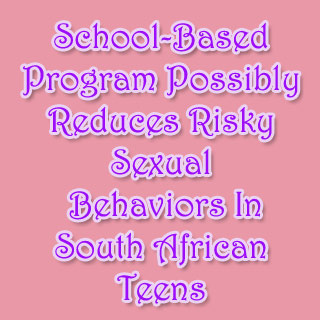
Estimates claim that more than one-half of all South African individuals aged 15 years in 2006 will not survive to 60 years of age. Hence, creating awareness about dangerous and risky sexual behaviors in youngsters may help reduce the number of HIV patients. In order to test the ability of a school-based prevention program in such an environment, experts triggered a cluster-randomized, controlled study. The analysis included 18 primary schools in Eastern Cape Providence, South Africa and two six-session behavior-change interventions based on extensive investigations.
Experts allege, “In conclusion, sexual transmission of HIV is a major risk faced by adolescents in sub-Saharan Africa, and interventions are needed urgently to reduce their risk. This study provides the first evidence that a theory-based, contextually appropriate intervention can reduce sexual risk behaviors, particularly unprotected vaginal intercourse, vaginal intercourse and multiple partners, among young South African adolescents in the earliest stages of their sexual lives. Future research with more sexually experienced adolescents will have to explore whether such interventions can have an effect on condom use and STDs, including HIV.”
John B. Jemmott III, Ph.D., of the University of Pennsylvania, Philadelphia, and colleagues randomly assigned nine schools to participate in the HIV/STD intervention. This intervention aimed to teach students ways of avoiding HIV and other STDs. It created awareness about abstinence and condom use, and increase the skills and self-confidence required for choosing less risky behaviors. The intervention focused on behaviors associated with other disorders, like heart disease, diabetes and cancer.
1,057 children with an average age of 12.4 years were questioned about sexual behaviors before and three, six and 12 months after the intervention. Having conducted three follow-ups, investigators noted a smaller percentage of students in the HIV/STD risk reduction group than the health promotion group. Unprotected vaginal intercourse was reported by 2.2 percent from the HIV/STD risk reduction group and 4.2 percent from the health promotion group. Vaginal intercourse was registered by 4.8 percent of HIV/STD risk reduction group and 7.2 percent of health promotion group. 1.8 percent of HIV/STD risk reduction group and 3.2 percent of health promotion group had multiple sexual partners.
The study is published in the October issue of Archives of Pediatrics and Adolescent Medicine, one of the JAMA/Archives journals.
